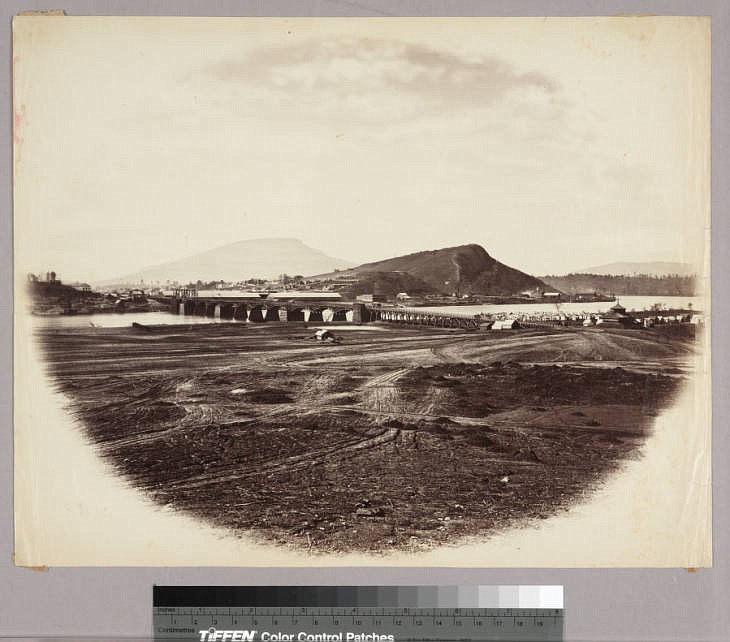(Editor's note: Second in a series)
Tennessee was the last Southern state to leave the Union in 1861 and the first to begin the process for readmission in late 1864, moving to repeal the Act of Succession and affirm the 14th Amendment, even as the war continued.
How did Tennessee's early readmission to the Union impact Chattanooga?
Chattanooga began rebuilding, and the rebuilding plans were more than an attempt to modernize; that was a necessity. As one new resident to the community noted: Chattanooga "was not a beautiful place. It looked as it was ... a scraggy, unkempt, unsightly, sprawling place, looking a good deal like some of the mining camps in the West, and one of the most undesirable places in which to live that I have ever seen."
His description was accurate. Current residents may have an idealized picture of virgin woodlands where early settlers emerged from their flatboats or wilderness trails, helping to settle the area known as Ross's Landing. Even when Hamilton County was chartered in 1819, the landscape retained its beauty. However, the war had not been kind to Chattanooga. There were only a few trees left in all of Chattanooga; Cameron Hill was bald, and Missionary Ridge boasted fringes of shrubs and a multitude of stumps. While many of the homes had been destroyed or damaged through shelling or repurposing by federal forces, the entrepreneurial spirit of the citizens, determined to move their city forward, grew into a fever of progress and renewal.
Chattanooga held a somewhat unique place among Southern cities. It had been the home of a vast federal arsenal during the last months of the conflict, and its population had doubled during the war years. While the signs of fighting were visible in every direction, the federal forces had made some improvements that would fast-forward progress. For example, when the Union army pulled out during the winter of 1865-66, they gifted the city with the bridge spanning the river. Additionally, both officers and enlisted men left the area with plans on returning after their military commitments ended. Chattanooga held promise, and they wanted to be a part of the "new" city.
In October 1865, the municipal government in Chattanooga reformed, under supervision of the federal provost marshal, and a provisional mayor and aldermen were elected. One of their first actions was to deal with the increasing crime wave that including "fast buggy driving, riding on the streets with lewd women and playing cards on Sunday." While more serious crimes are evident in the records, individuals were jailed for committing these more humorous crimes.
Another major change in Reconstruction Chattanooga was a dramatic increase in the African American population. While Tennessee's larger cities had experienced growth because former slaves and free people of color felt more secure in more populated surroundings, Chattanooga was again in a unique position. The federal forces had touted Chattanooga as the "Gateway to the South" but, by 1864, it had also become known as the "Gateway to Freedom" for people of color living across the deeper South. If a former slave could make his or her way to Chattanooga and cross to the northern bank of the Tennessee River, federal forces would step in to provide protection.
The result was not freedom - not yet - but classification as "contraband" or property of the U.S. Army guaranteed that the person could not be forced back southward and returned to slavery. When the official surrender came, many former residents of Camp Contraband and members of the U.S. Colored Troops chose to stay in Chattanooga. They and their descendants became a vital part of the new city; visitors will find evidence of their presence among the older graves in Chattanooga's historic Beck Knob cemetery.
While many of the families who had fled during the Battles for Chattanooga did not return, some did, even though their financial positions had changed. These families were joined by others who were willing to speculate on Chattanooga's promising future. Their names have become a part of our history: Key, Massengale, Kennedy, Cravens, Wilder, Parham, Brabson, Whiteside and others.
Two indicators of Chattanooga's educational and social progress are perfect final notes for this segment. In 1865, as Chattanooga began its Reconstruction, Howard (High) School was established for African American students, named to honor Gen. Oliver O. Howard. Two years later, the First Congregational Church became the first church in the South to allow both white and black members.
A dynamo was being born.
Linda Moss Mines, Chattanooga-Hamilton County historian and member of the Tennessee Historical Commission, is regent, Chief John Ross Chapter, NSDAR.
